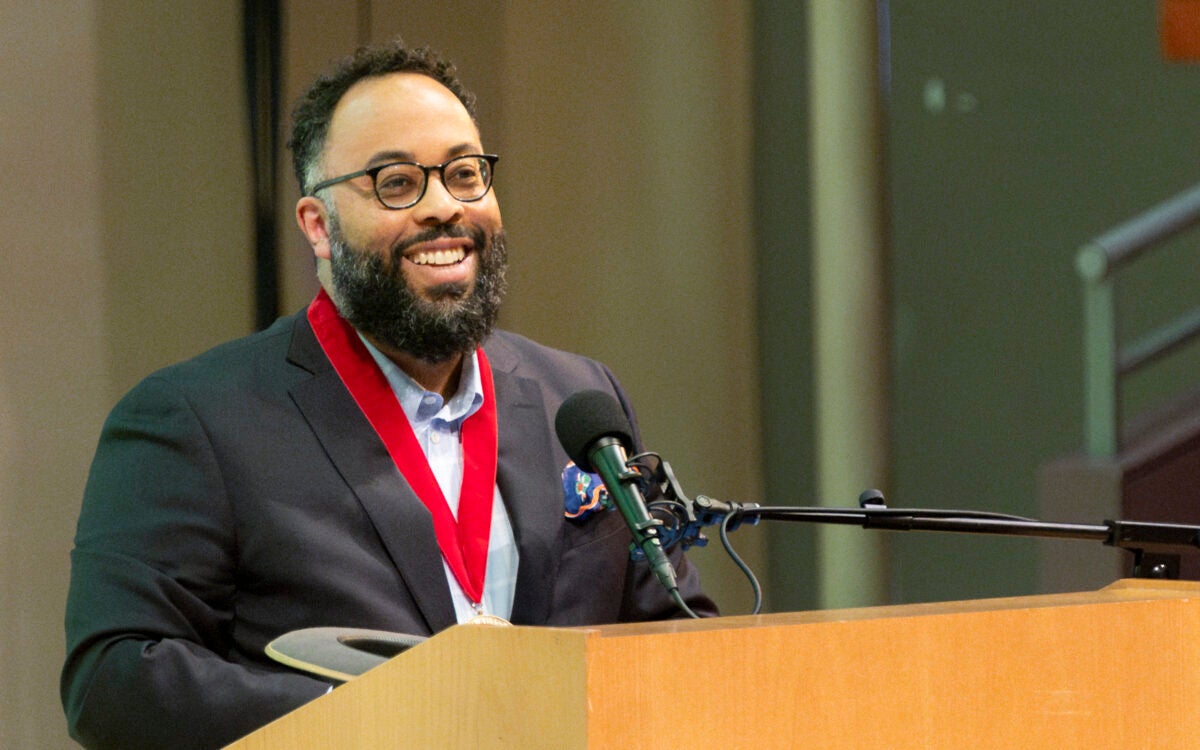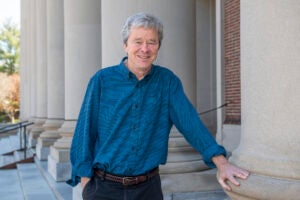Storytelling through body language
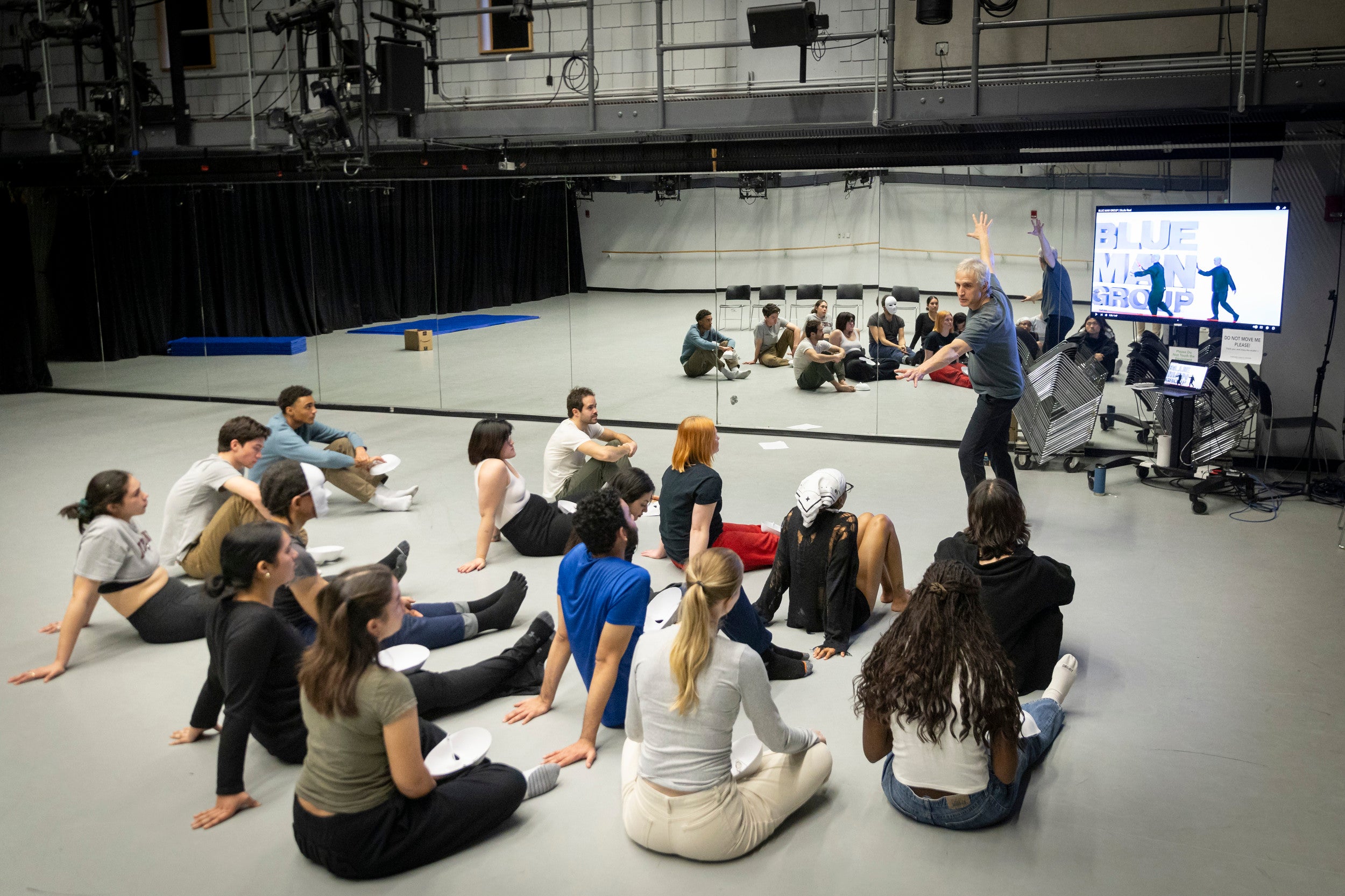
Longtime member of the Blue Man Group Peter Simpson leads his class “Physical Approaches to Acting and Storytelling” in the Harvard Dance Center.
Photos by Niles Singer/Harvard Staff Photographer
Veteran of Blue Man Group teaches students art of building a character without saying a word
Three students wearing white commedia dell’arte masks sat facing their classmates. The first tore paper into a small square, the second folded it, and the third rolled it into a ball.
The assembly line moved at a steady pace, but things quickly became chaotic when instructor Pete Simpson — longest-running member of the performance art company Blue Man Group — urged the students to change their pace and precision.
“We can eliminate intentional character qualities almost entirely,” Simpson said of the exercise that Blue Man Group created to train its performers to convey a story using basic movements without overacting. “And yet through performing simple tasks at a certain speed and at a range of precision, character still emerges.”
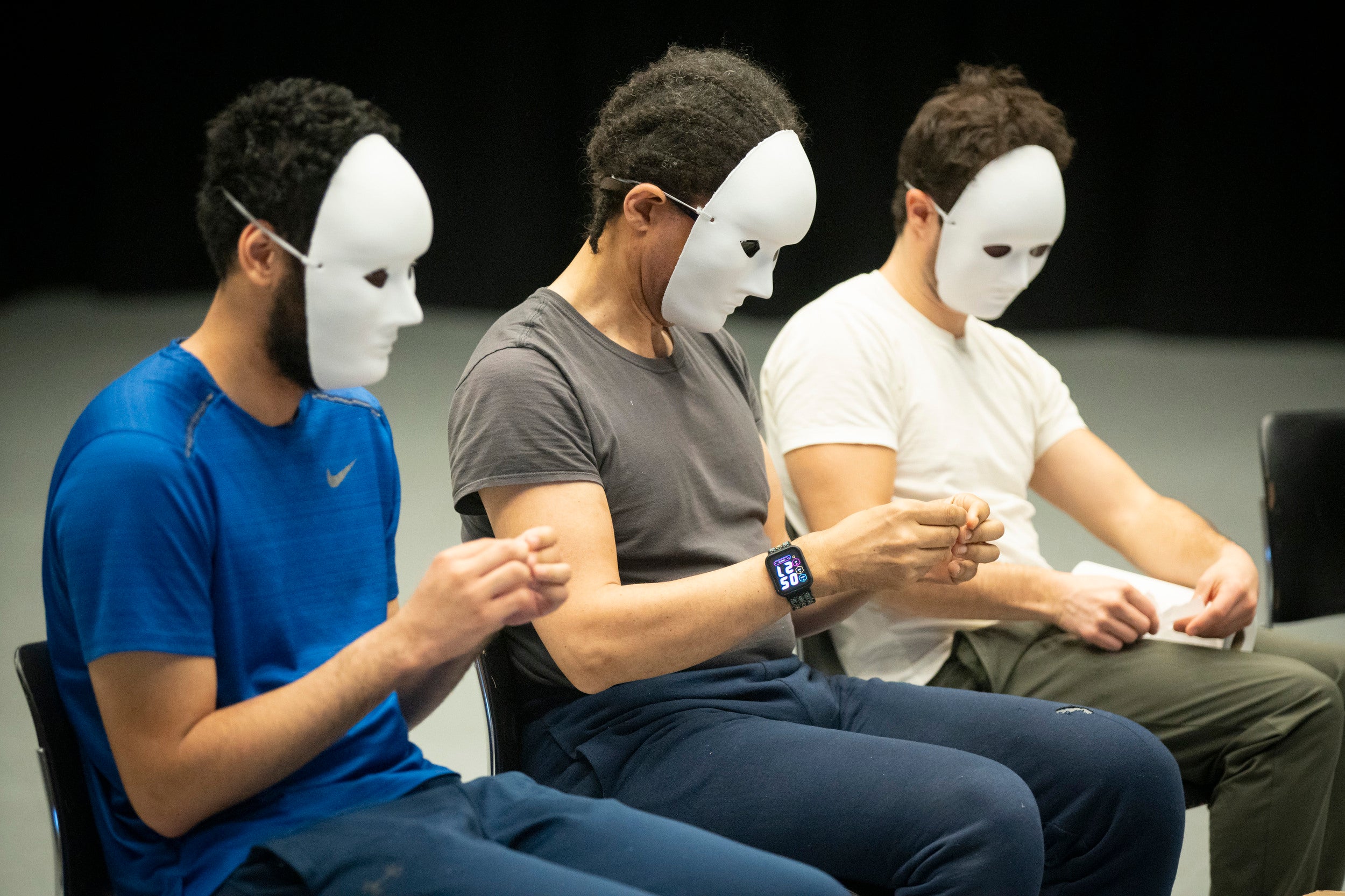
Simpson — who is teaching “Physical Approaches to Acting and Storytelling” in the Theater, Dance & Media program this spring — joined Blue Man Group right out of college in 1996 and has performed more than 5,000 shows in 27 cities over 28 years. He now trains new cast members.
“Building a character from an archetype point of view requires a full physical commitment,” Simpson said. “It is character exuding through every tendril of your physical being. I think this course helps warm them up for that.”
In a recent class, students learned about the early 20th century origins of performance art, including Futurism and Dada, that paved the road for Blue Man Group. They also studied the six archetypes of a Blue Man character (the innocent, the hero, the scientist, the shaman, the group member, and the trickster) and practiced moving like them, peering with interest like a scientist and gazing around in wonder like an innocent.
“Movement is a form of expression that is empathetic, identifying with the flawed human beings that we are,” Simpson said. “Each body has a history, be it physical injury or psychological narratives that manifest physically — where we trap tension in our shoulders, take on certain gaits of walking, heaviness or lightness of step, jaw clenching, all sorts of things. I think movement can either celebrate that asymmetry and idiosyncrasy or help us identify narratives behind those asymmetries/idiosyncrasies for creative or personal growth.”
“The banana peel, metaphorically, is always there and waiting for us no matter how noble our intentions or how abominable our intentions.”
In physical comedy, Simpson said, performers draw from humans’ inherent “gracelessness” and the idea that some foil inevitably gets in the way of best-laid plans. Picture, he said, an evil villain character who accidentally leaves her shoes untied, or a lawyer character arguing passionately before a jury, oblivious to a big hole in his pants.
“The banana peel, metaphorically, is always there and waiting for us no matter how noble our intentions or how abominable our intentions,” he said. “If a character is putting all their earnestness and zeal into something that might seem dastardly or scary — or morally elevated and noble — once you give them a physical problem, a physical habit, a physical blind spot, we start to enter a realm of comedy.”
Simpson encourages students to start by finding a neutral posture on stage.
“How do we stand in a way that is both relaxed and ready?” he asked. “It’s finding a neutral where body alignment makes gravity your best friend — a sort of ideal resting state — while also creating a neutral that can launch a body into quick, expressive action at a moment’s notice.”
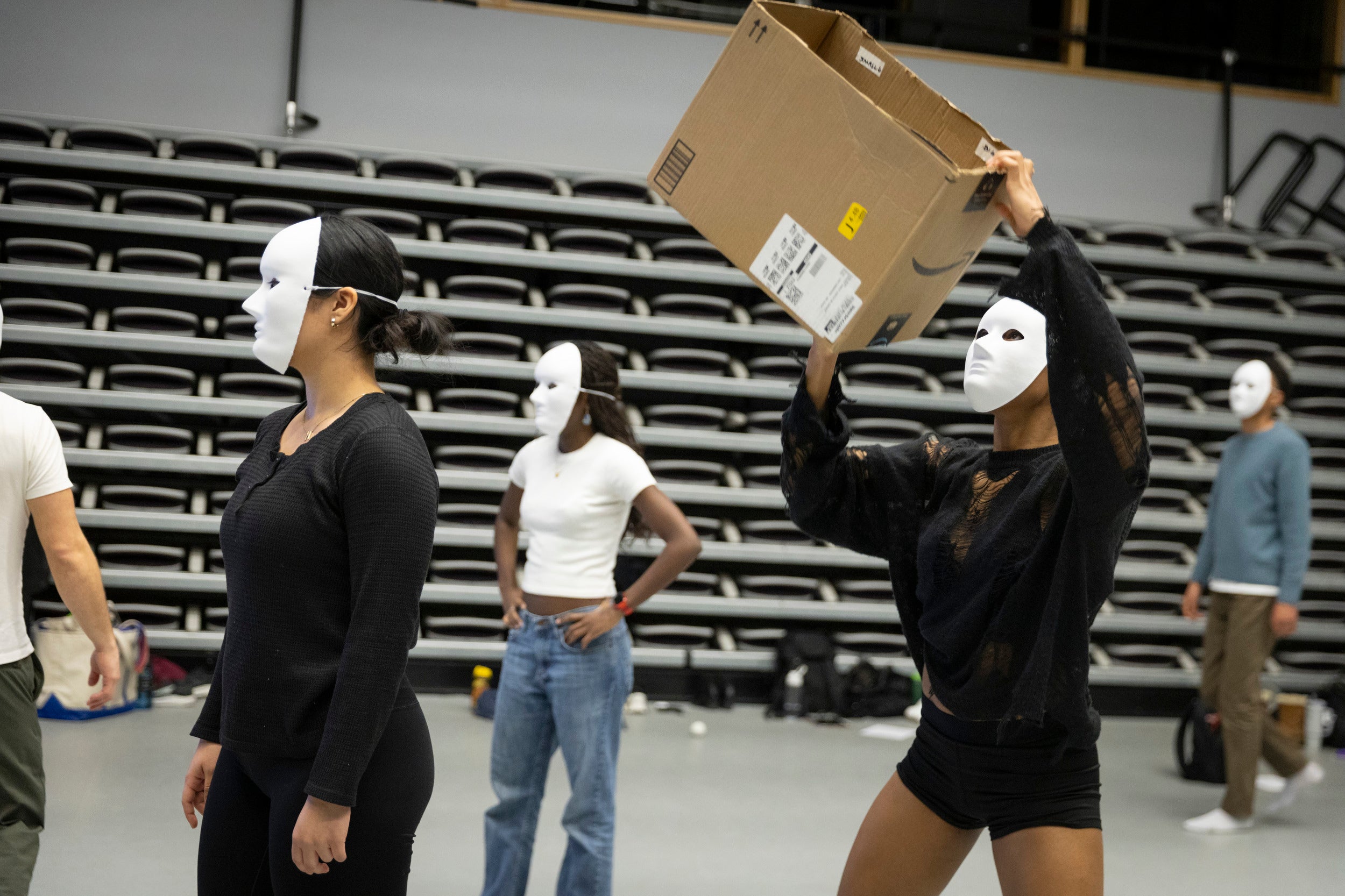
The class does exercises like “milling and seething,” moving around the room to develop body awareness in space, or performing two minutes from their day. They are exploring strength and conditioning practices like yoga and tai chi, and studying influential theater-makers like Richard Maxwell and James Donlon as well as stylistic schools from mime to clowning.
Jasmine Adams ’24, a biomedical engineering concentrator with a Theater, Dance & Media secondary, said she has gained confidence in movement through the course, which she recently applied to dancing in the student Ghungroo showcase of South Asian visual culture. She’s even found parallels with science.
“I’m learning about how the body moves,” Adams said. “It’s cool to be able to take the academic things that I’ve learned about the body and get to explore that even more in a physical way through this class.”
With a busy schedule balancing Blue Man shows, training and teaching in New York City, and commuting to teach in Cambridge, Simpson confirmed that it’s not uncommon for him to show up to class with a little blue paint behind an ear.
The self-described “eclectic” performer has worked with theater companies like the Wooster Group, Big Dance Theater, Half Straddle, and Elevator Repair Service, and appeared in film and TV projects like “Marriage Story” and “Gotham.”
Simpson said he hopes the course will be helpful for students regardless of whether they use their skills for the stage or simply as a form of stress relief.
“I would love for them to come out with a sense of joy of creating things together — to be able to walk out with that ability to know that at any given moment they can tap into joy, they can tap into creative collaboration, and into storytelling from a grounded, connected physical instrument.”
